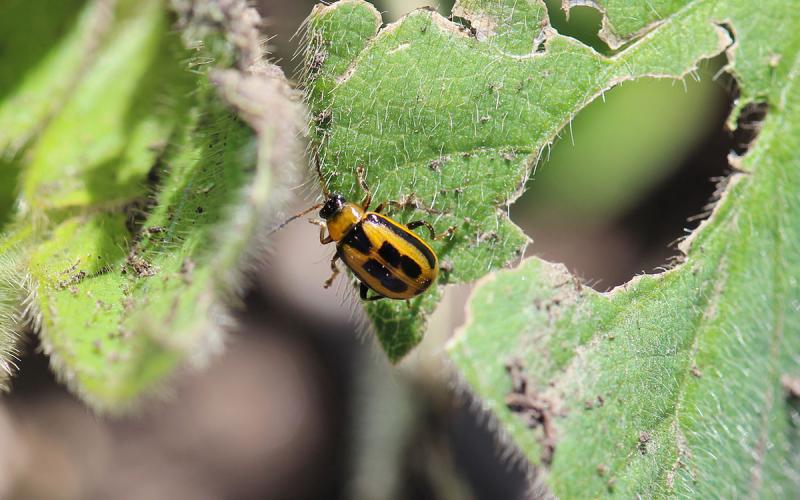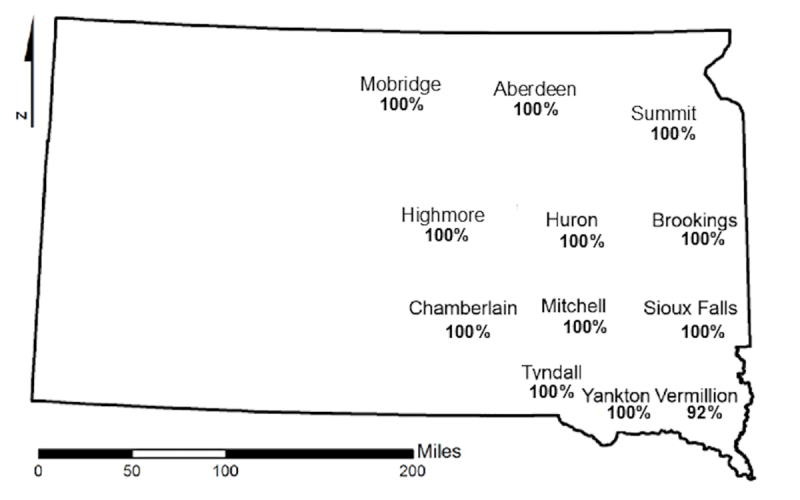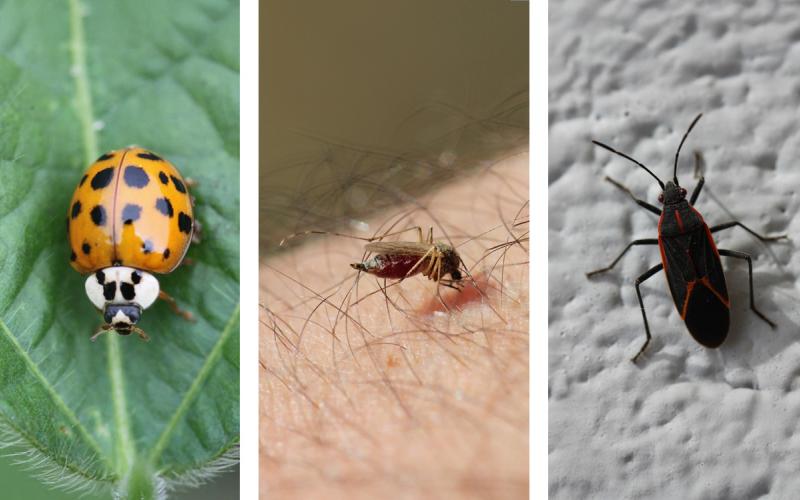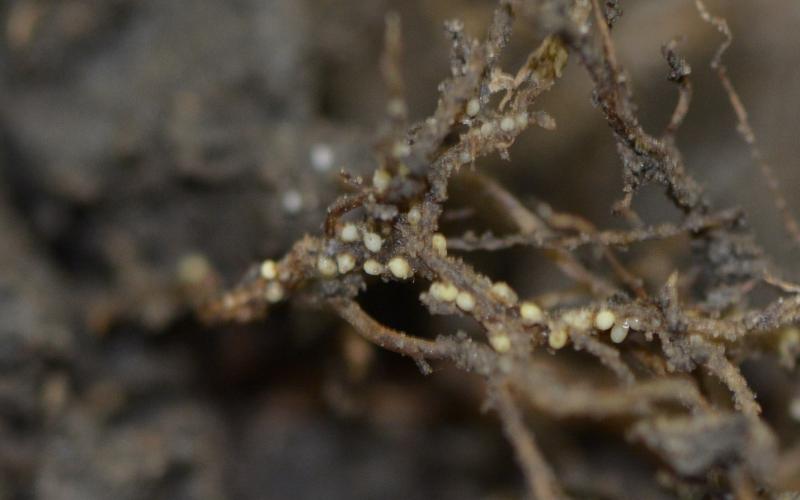
Written collaboratively by Adam Varenhorst, Brad McManus, Philip Rozeboom, and Patrick Wagner.
Each year we evaluate the overwintering success of bean leaf beetles in South Dakota. For adult bean leaf beetles that successfully overwintered, emergence will begin in the spring, and they will move into soybean fields. At this time, the overwintering adults will begin feeding on the seedlings with the potential to cause serious defoliation injury (Figure 1). However, the population density of overwintering bean leaf beetles is negatively affected by cold winter air temperatures. Knowing the amount of days the air was cold enough to cause bean leaf beetle mortality allows us to estimate the emerging populations in the spring. The first step in calculating bean leaf beetle mortality is recording the air temperatures that drop below 14 degrees Fahrenheit (-10 degrees Celsius). At such temperatures, bean leaf beetle adults freeze and subsequently die. Although the adults can survive cold temperatures by hiding under plant debris and loose soil (especially in wooded areas), they cannot survive sustained sub-zero temperatures. Snow cover also increases the likelihood of bean leaf beetle survival, even when temperatures drop below 14 degreesd Fahrenheit.
Lam and Pedigo (2000) developed a survival model for the bean leaf beetle to predict overwintering population mortality. This model functions by accounting for the accumulation of sub-freezing temperatures (14 degrees Fahrenheit or colder), and the known response of overwintering bean leaf beetles in both exposed (under crop residue in a field) and protected (residue in wooded areas) environments to such temperatures.
South Dakota Predicted Mortality Rates

Using the previously mentioned model, the predicted mortality rates for the 2024-2025 overwintering bean leaf beetle populations in Eastern South Dakota ranges from 55% to 89% (Figure 2). This suggests that there will be bean leaf beetles present this spring across South Dakota. Populations may be worse in areas that had snow cover or crop residue present during weeks with sub-zero temperatures.
Based on the 2024-2025 bean leaf beetle mortality prediction, bean leaf beetles will likely not be an early season issue for soybeans in most of South Dakota. The only location that had some survival was in the Vermillion area. The cold temperatures in 2025 occurred when little to no snow cover was present, so mortality rates should be accurate. Early season scouting for bean leaf beetle adult activity should occur to ensure no activity within fields. Scouting should begin at soybean emergence and continue through the early vegetative stages. The overwintering generation of bean leaf beetles can be effectively managed by using insecticide seed treatments at planting in areas with historic bean leaf beetle pressure, or with foliar insecticides when populations become active in soybean. View the latest South Dakota Pest Management Guide for Soybeans for a list of seed treatments and foliar insecticides that are labeled for bean leaf beetle management in South Dakota.


